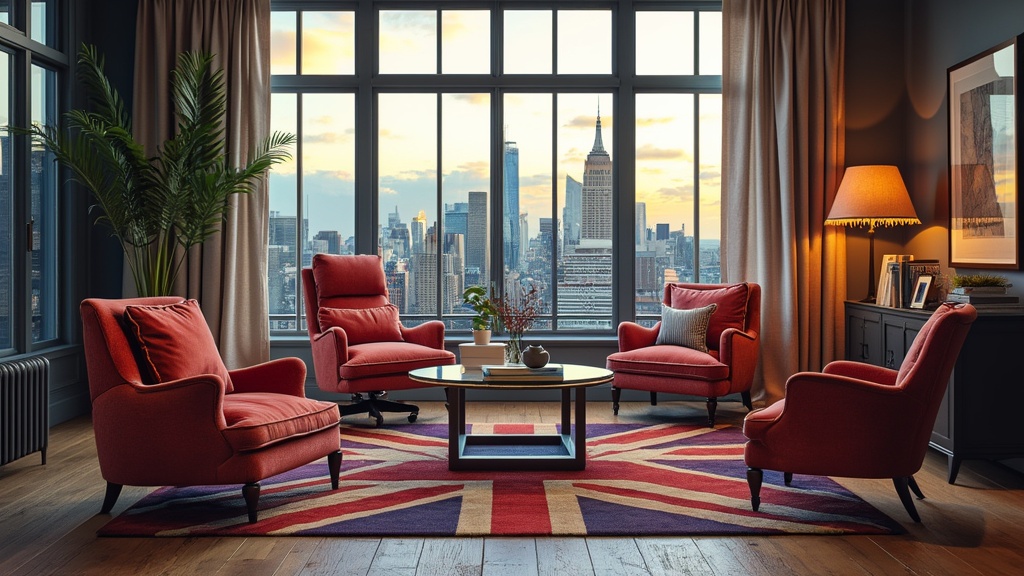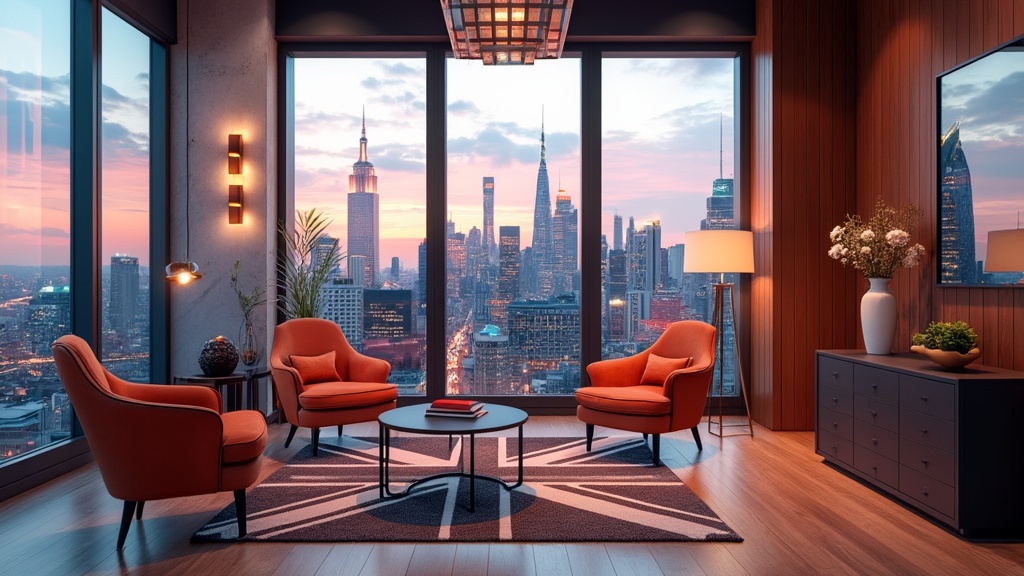Transforming contemporary interiors, British-inspired furniture encapsulates elegance and heritage. British furniture design features a rich history that influences unique aesthetics, elevating any home decor.
By combining traditional craftsmanship with modern trends, this style introduces refined elegance to residential spaces.
Luxurious elements such as natural wood and leather upholstery create sophisticated interiors that captivate the eye.
Click here to learn more about: wholesale
Understanding British Furniture Design
The essence of British furniture design lies in a harmonious blend of timeless forms and modern aesthetics.
The interplay between classic English decor and current trends is particularly noteworthy, showcasing the seamless integration of heritage craftsmanship into today’s interior spaces. Key characteristics that distinguish British design from alternatives include:
- Quality materials: Wool fabrics and ornate woodwork.
- Timeless forms: An emphasis on classical silhouettes that maintain functionality.
- Elegant accents: Decorative cushions and intricate detailing.
Renowned designer Thomas Chippendale exemplifies this legacy with his iconic pieces, setting benchmarks in craftsmanship excellence that still resonate in the industry.
With a focus on cohesive themes and functional design, British-inspired furniture creates cozy living spaces that reflect both Victorian elegance and Georgian charm. It embraces sustainability through the use of sustainable materials, ensuring that the charm of traditional styles remains relevant in modern homes.

What Defines Classic English Decor
Classic English decor embodies a timeless aesthetic rooted in rich cultural heritage. Historical context significantly influences design choices; for instance, Victorian elegance evokes a sense of nostalgia, impacting modern interpretations.
Essential elements of this style include a color palette that features soft, muted tones like sage green and muted blue.
Natural materials, such as velvet and wool, harmonize beautifully with ornate woodwork, creating sophisticated interiors.
To incorporate these fundamental elements practically, consider mixing antique accents with modern furnishings or enhancing spaces with statement wallpaper featuring classic floral designs. This thoughtful blend creates cozy living spaces that honor traditional craftsmanship while embracing the present.
Exploring Traditional Styles In Furniture
Delving into traditional furniture styles reveals their enduring influence on contemporary design, reminding us of the significance of heritage craftsmanship.
Specific styles, such as Chippendale and Georgian furniture, are experiencing a remarkable resurgence, exemplified by intricate detailing and refined ornamentation. Embracing these classic silhouettes allows designers to merge them with modern aesthetics effectively.
Utilizing modern art alongside classic furniture creates striking visual contrasts.
Choosing a neutral backdrop can enable traditional pieces to stand out, fostering a harmonious and elegant decor that seamlessly links the old with the contemporary.
For a successful integration, consider selecting bespoke furniture that embodies both quality materials and craftsmanship excellence, ensuring functional design blends with refined elegance in residential interiors.
Classic English Decor and Traditional Furniture Styles
- Classic English decor is characterized by a color palette of soft, muted tones that create a calm and inviting atmosphere.
- Victorian elegance plays a significant role in the nostalgia and design choices of modern interpretations of classic decor.
- Traditional furniture styles like Chippendale and Georgian are known for their intricate detailing, which enhances the sophistication of modern interiors.
- Integrating bespoke furniture ensures a combination of quality materials and craftsmanship, leading to functional yet elegant living spaces.
The Allure Of Bespoke Furniture
Bespoke furniture captures the imagination by offering a level of personalization that mass-produced items simply cannot match. Bespoke pieces promote individuality, enabling homeowners to express their unique tastes and preferences through their selection.
Choosing bespoke furniture often delivers long-term value and satisfaction due to superior quality and craftsmanship.
For instance, a custom-made dining table not only serves as a functional centerpiece but also tells a story through its design and materials, reflecting the owner’s personal journey.
By opting for bespoke creations, individuals enhance their living spaces with distinctive items that embody their personality while fostering a more thoughtful and sustainable home environment.
Heritage Craftsmanship In British Interiors
Heritage craftsmanship plays a pivotal role in preserving traditional techniques within British furniture design. Craftsmanship excellence ensures quality and durability, resulting in pieces that possess a rich narrative and a connection to history.
This commitment to artisan techniques not only celebrates historical influences but also aligns seamlessly with modern sustainability goals, appealing to eco-conscious consumers. One notable local craftsman is the Harrison & Gilkes workshop, esteemed for its exquisite handcrafted pieces that exemplify quality materials and intricate detailing.
By supporting such artisans, homeowners can enhance their interiors with unique, timeless forms that contribute to the overall beauty and character of their living spaces.
- Bespoke furniture can increase the value of a home due to its unique craftsmanship and materials.
- Custom-made pieces often use sustainable materials, aligning with eco-friendly practices.
- Heritage craftsmanship connects modern design with historical techniques, enriching the cultural narrative of furniture.
- Supporting local artisans fosters community and preserves traditional skills that may otherwise be lost.
How To Achieve Sophisticated Interiors
Achieving sophisticated interiors requires a balance of elegance and thoughtful design choices. Key principles such as color palettes and materials play significant roles in this process.
Focus on cohesive color schemes that promote harmony, while incorporating quality materials like silk, wool, or leather upholstery for a refined finish.
Layering textures enhances sophistication; for instance, combining a sleek velvet sofa with decorative cushions or a knitted throw can create visual interest.
Embracing these principles ensures your living space reflects a sophisticated demeanor while remaining inviting and comfortable.
Interesting fact: Layering textures not only adds depth to a room but also creates a tactile experience that invites relaxation.
Must-Have Upholstered Seating Ideas
Crafting comfortable spaces requires an emphasis on quality, and upholstered seating serves as the foundation of comfort and style in any interior design. Trending upholstery fabrics such as performance materials offer durability and easy maintenance, ensuring that elegance doesn’t come at the cost of practicality.
Boucle and velvet, known for their luxurious textures, can elevate simple chairs or sofas into statement pieces. Selecting upholstery is essential; consider fabrics that either complement the established color palette or provide a striking contrast, thereby enhancing the overall aesthetic of your space.
Did you know? Choosing upholstery that aligns with your existing decor not only enhances the visual appeal but also contributes to a cohesive design narrative throughout your home.
- Consider natural materials: They promote sustainability while adding elegance.
- Mix textures: Combine different fabrics for a layered approach that adds depth and interest.
- Think about scale: Ensure that the size of upholstered pieces complements the proportions of the room.
This thoughtful approach leads to a cohesive and inviting atmosphere that harmonizes with your design intentions.
- Using a cohesive color palette can enhance mood and create a sense of tranquility in living spaces.
- High-quality upholstery can increase the lifespan of furniture, making it a worthwhile investment.
- Layering textures can improve the aesthetic appeal and comfort of a room, making it more inviting.
- Natural materials in upholstery contribute to a healthier indoor environment by reducing synthetic chemical exposure.
Incorporating Ornate Woodwork In Decor
Ornate woodwork has a profound effect on interior aesthetics, promoting an appreciation for artisan craftsmanship and creating an eye-catching focal point within a space. Homeowners frequently discover that intricate wood details, such as hand-carved mantelpieces or beautifully crafted staircases, serve as captivating elements that enhance the overall decor.
Enhancing Aesthetic Appeal
For instance, a traditional living room adorned with a coffered ceiling exemplifies how ornate woodwork can dramatically transform a room’s ambiance.
The use of such detailing not only elevates the space but also reflects a commitment to quality materials and craftsmanship excellence.
This reinforces a connection to timeless forms and heritage craftsmanship, seamlessly merging classic English decor with contemporary elements.
Creating Cohesive Themes
Incorporating intricate woodwork into your design can harmonize various decorative styles, contributing to a refined aesthetic that resonates with elegant accents and functional design.
Spaces that feature bespoke furniture and antique accents are more than just visually appealing; they provide a sense of history and warmth.
For example, a dining area featuring a handcrafted wooden table, complemented by upholstered seating in quality materials, showcases this design principle effectively.
Integrating ornate woodwork into your decor is not merely an aesthetic choice, but rather a statement on the value of craftsmanship excellence. As these details come together, they create cozy living spaces that reflect personal style and cultural heritage.
Ornate Woodwork in Decor
- Ornate woodwork can increase property value by enhancing aesthetic appeal and showcasing quality craftsmanship.
- Intricate wood details often serve as focal points, drawing attention and creating visual interest in a space.
- Utilizing bespoke furniture and antique accents can create a cohesive theme that resonates with both elegance and functionality.
- Handcrafted wood elements contribute to a sense of warmth and history, enriching the overall ambiance of living spaces.


